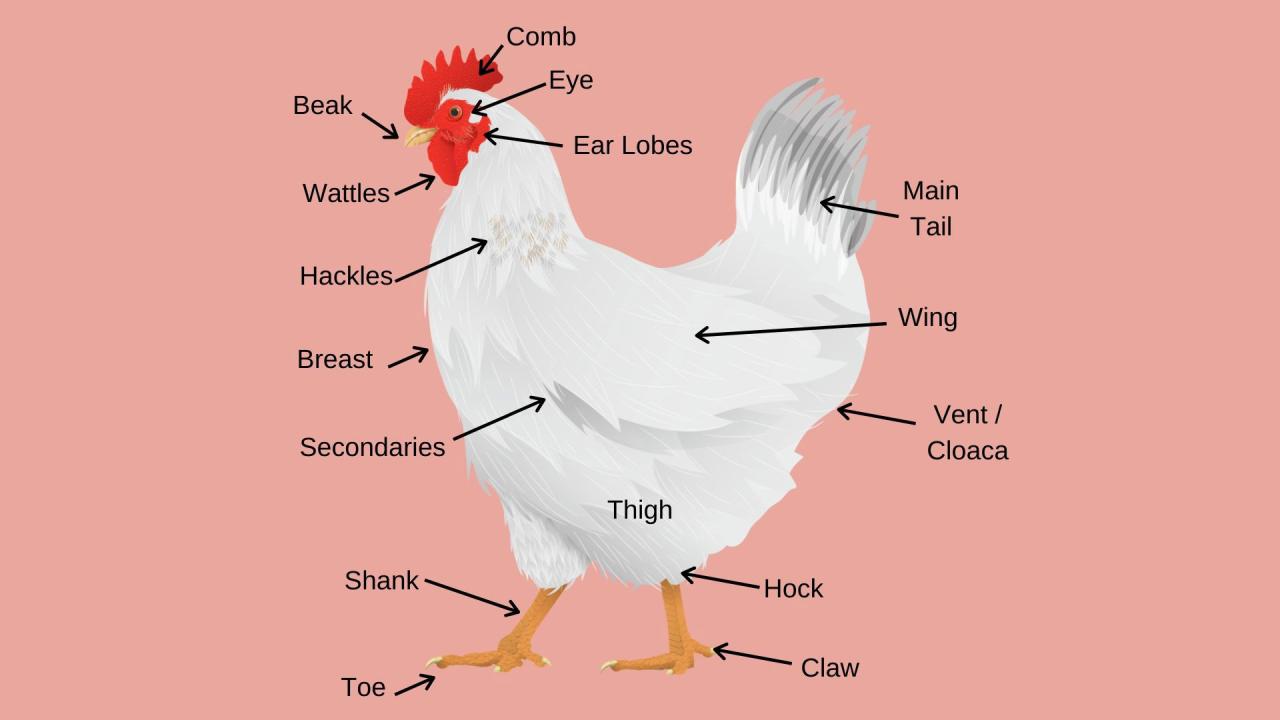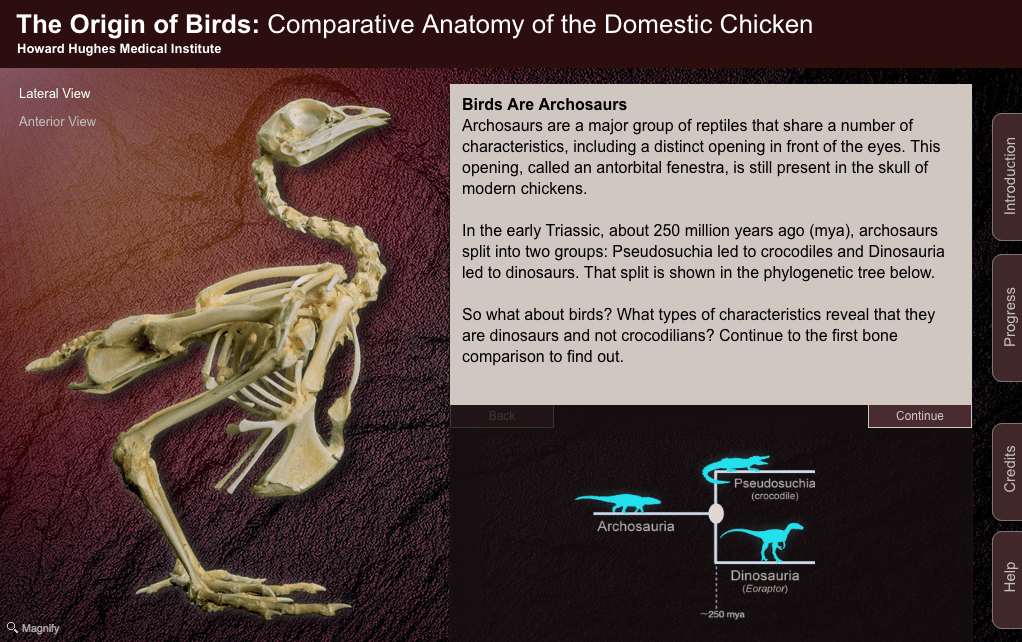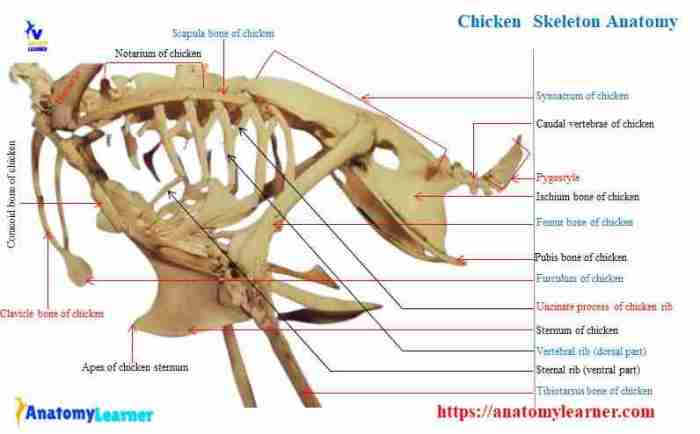Delving into the comparative anatomy of the domestic chicken, this exploration unveils the unique adaptations and intricate systems that define this avian species. From its specialized skeletal structure to its complex nervous and circulatory networks, each aspect of the chicken’s anatomy bears witness to its remarkable evolutionary journey.
As we embark on this anatomical odyssey, we will dissect the chicken’s skeletal system, muscular composition, nervous organization, circulatory network, respiratory apparatus, digestive tract, urinary system, and reproductive mechanisms. Through detailed descriptions and comparative analyses, we will unravel the intricate connections between form and function, shedding light on the chicken’s remarkable adaptations for flight, locomotion, and survival.
Comparative Anatomy of the Domestic Chicken: Skeletal System

The skeletal system of the domestic chicken exhibits unique features that facilitate its ability to fly and engage in bipedalism. Adaptations for flight include lightweight bones with hollow interiors, fused vertebrae, and a reduced number of ribs. The skull, with its characteristic beak and large orbits, is modified for feeding and vision.
The vertebral column, consisting of cervical, thoracic, lumbar, and caudal vertebrae, provides support and flexibility. The sternum, or breastbone, is enlarged and keeled, providing attachment points for flight muscles. The pelvic girdle and hindlimbs are robust, allowing for efficient locomotion and support during perching and scratching.
Adaptations for Flight
* Lightweight bones with hollow interiors reduce weight for efficient flight.
- Fused vertebrae in the thoracic region provide stability during flight.
- Reduced number of ribs allows for greater flexibility and expansion of the chest cavity during respiration.
Modifications of the Skull
* Beak: The beak is composed of keratinized sheaths covering the premaxillary and mandibular bones, providing a versatile tool for feeding.
Orbits
The large orbits accommodate large eyes, enhancing the chicken’s visual field for predator detection.
Cranial sutures
The sutures between the cranial bones are flexible, allowing for expansion of the brain during growth.
Modifications of the Vertebrae, Ribs, and Sternum
* Cervical vertebrae: The flexible cervical vertebrae allow for a wide range of head movements, aiding in feeding and predator avoidance.
Thoracic vertebrae
The fused thoracic vertebrae provide stability for flight and support the attachment of ribs.
Lumbar vertebrae
The lumbar vertebrae are reduced in number and fused, contributing to the rigidity of the vertebral column.
Caudal vertebrae
The caudal vertebrae are elongated and form the tail, providing balance during flight and locomotion.
Ribs
The reduced number of ribs allows for greater expansion of the chest cavity during respiration.
Sternum
The enlarged and keeled sternum provides attachment points for the powerful flight muscles.
Structure and Function of the Pelvic Girdle and Hindlimbs, Comparative anatomy of the domestic chicken
* Pelvic girdle: The pelvic girdle, composed of the ilium, ischium, and pubis, provides support for the hindlimbs and organs.
Hindlimbs
The hindlimbs consist of the femur, tibiotarsus, tarsometatarsus, and toes, enabling locomotion, perching, and scratching.
FAQ Resource: Comparative Anatomy Of The Domestic Chicken
What are the key skeletal adaptations of the domestic chicken?
The chicken’s skeletal system exhibits unique features such as a lightweight, hollow construction, fused vertebrae for flight stability, and modified pelvic and hindlimb structures for efficient locomotion.
How does the chicken’s respiratory system facilitate its high metabolic rate?
The chicken’s respiratory system features efficient lungs and an extensive network of air sacs, enabling rapid gas exchange and supporting the high oxygen demands of flight.
What are the distinctive characteristics of the chicken’s digestive system?
The chicken’s digestive system includes a muscular gizzard for grinding food, a well-developed crop for temporary storage, and a short, efficient intestine adapted to its omnivorous diet.


